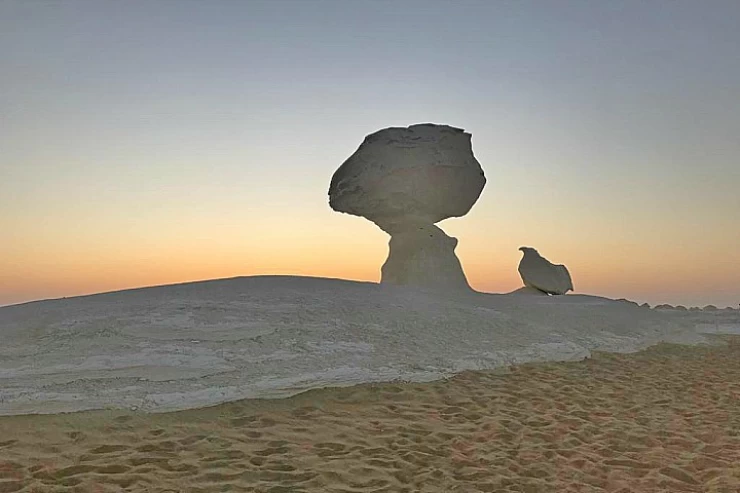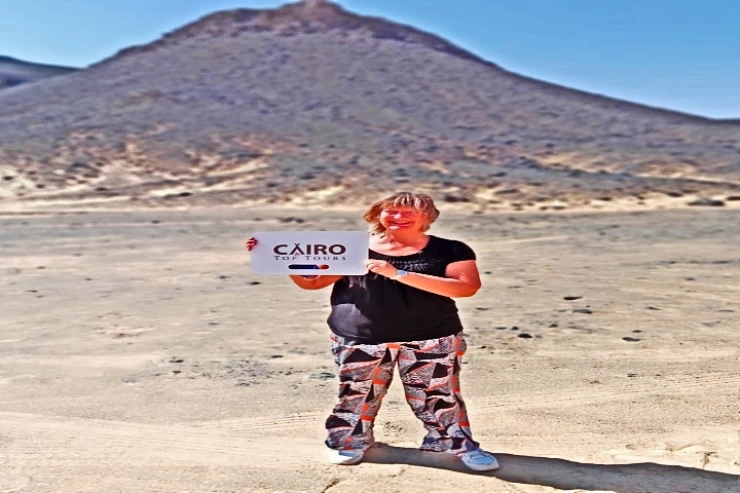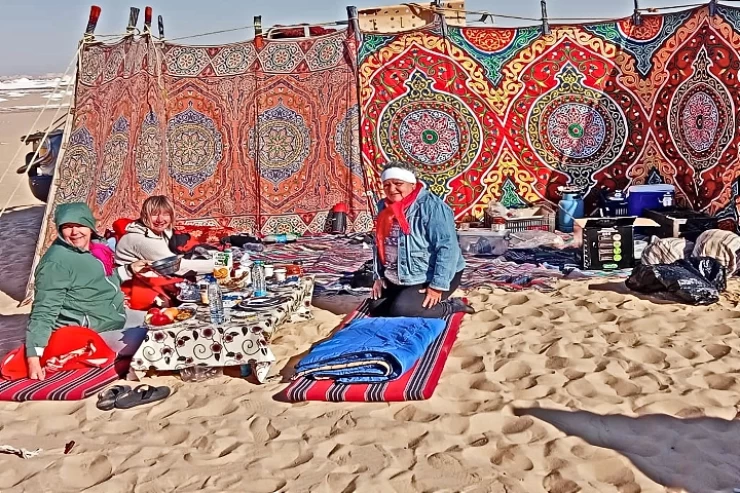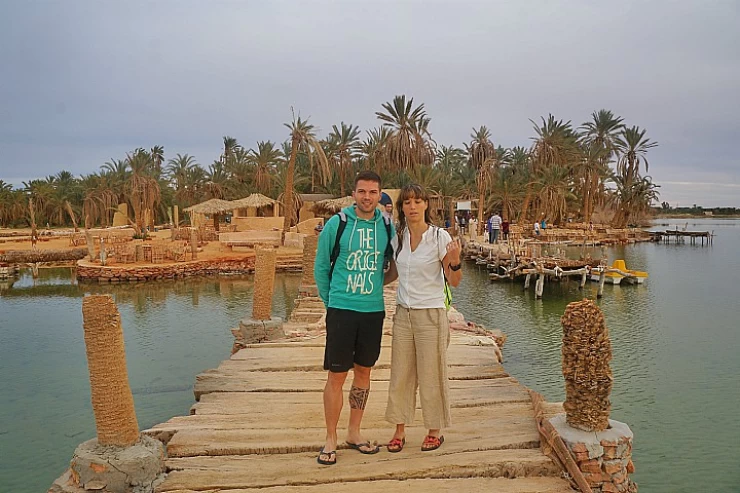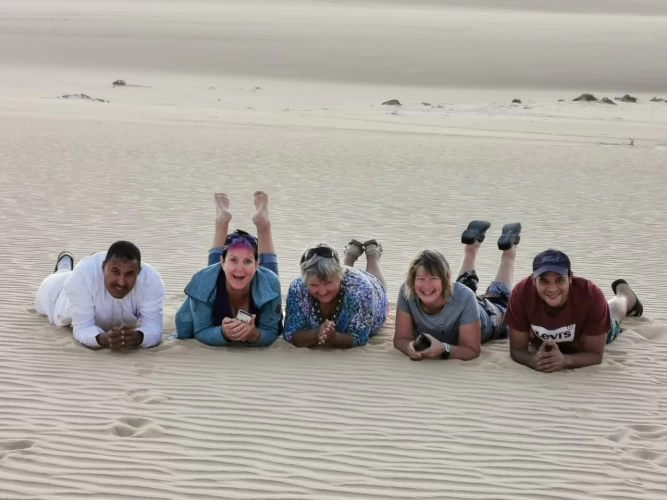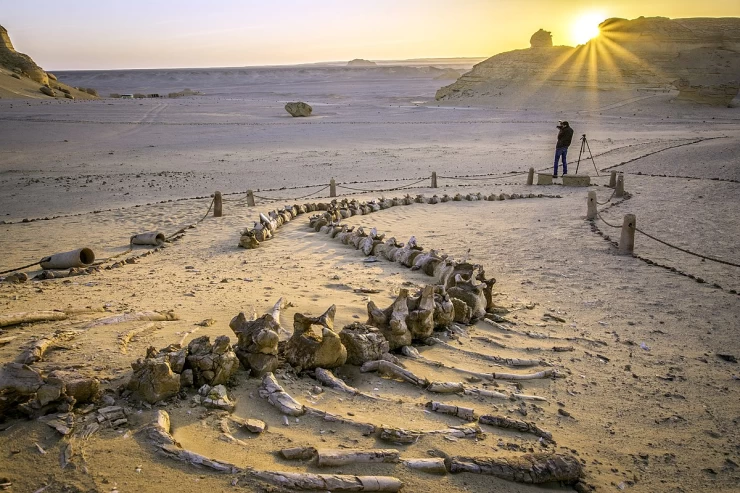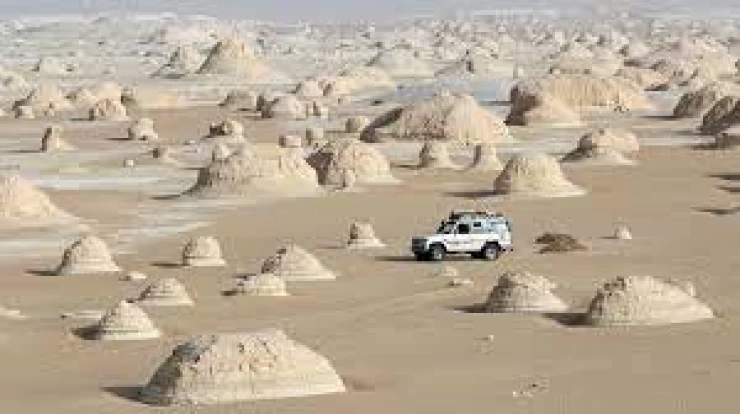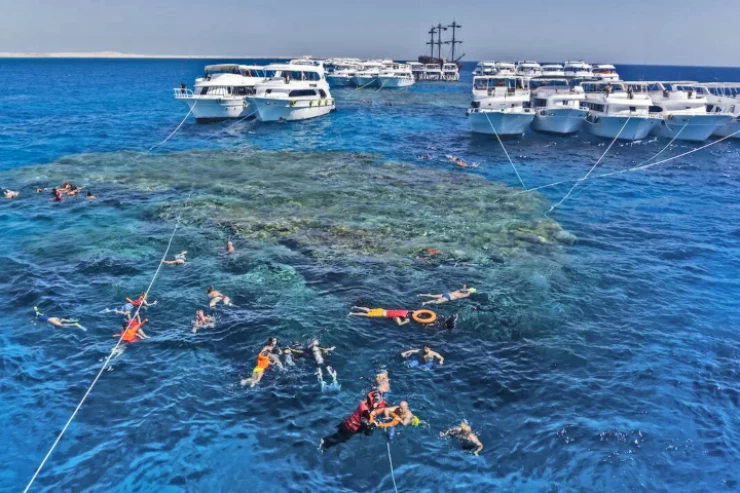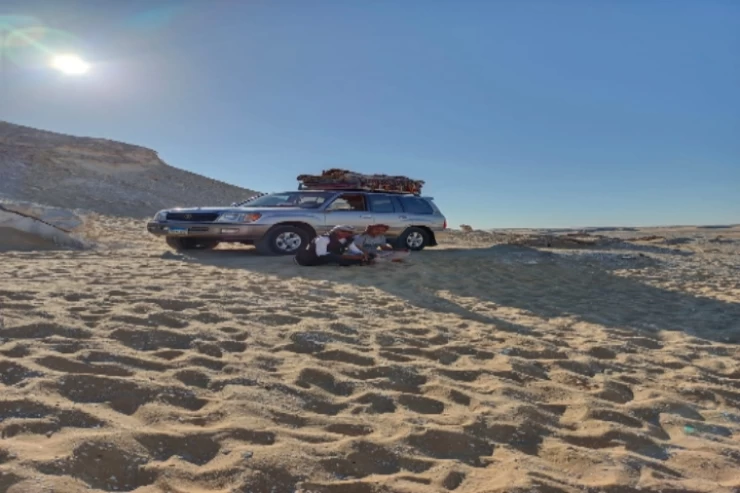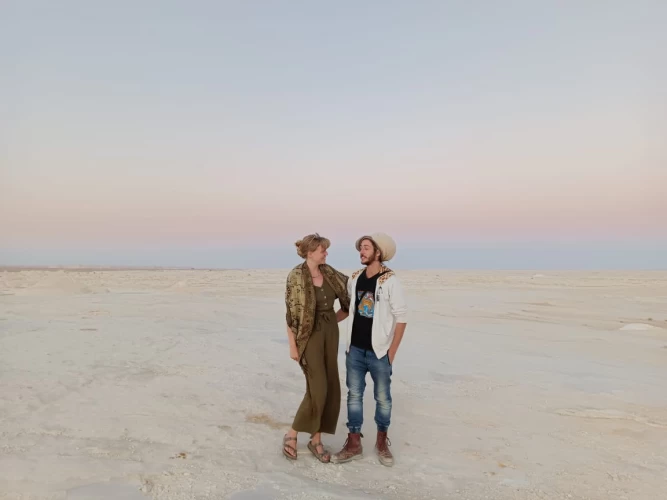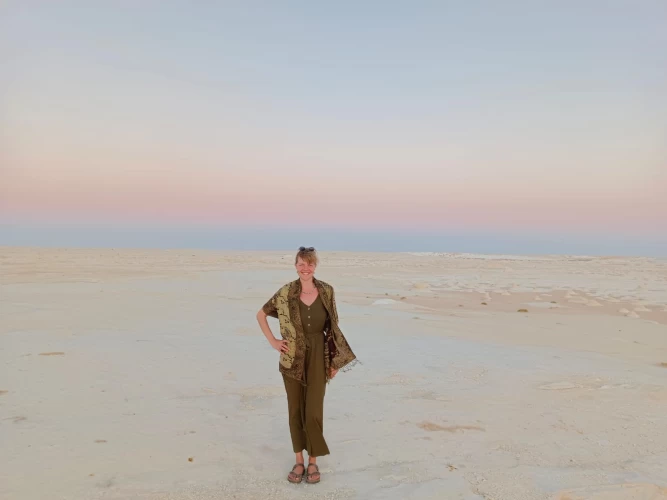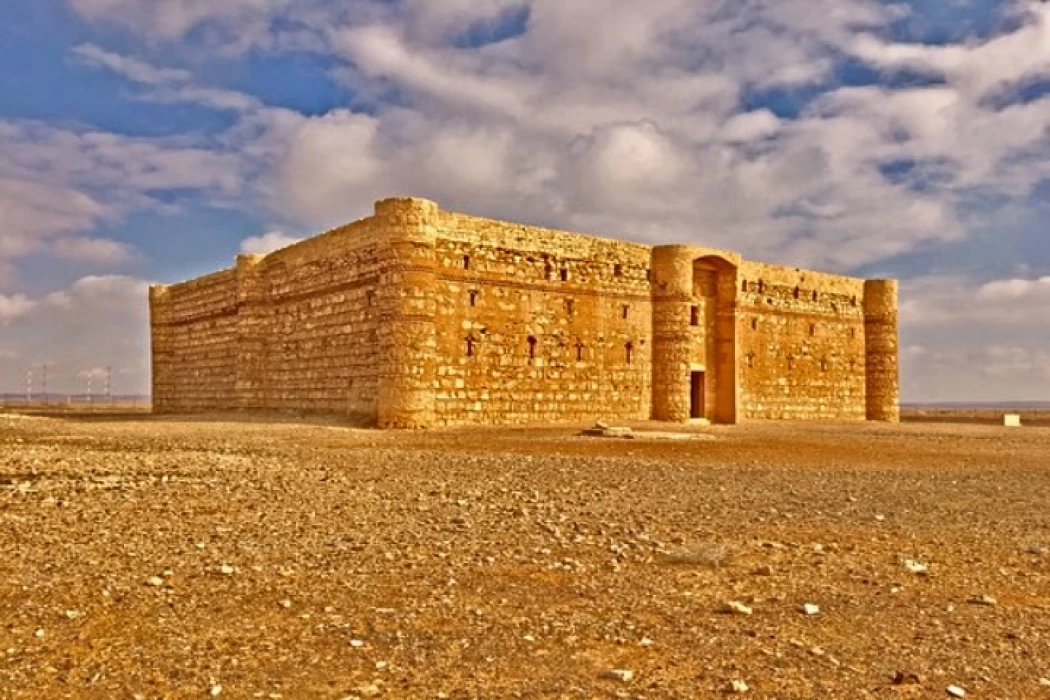
Desert Castles of Jordan
With a geographical location bordering Syria to the north and Iraq to the east, and 260 km from the capital Amman, the Jordanian city of Ruwaished, affiliated with the Mafraq Governorate, still retains an ancient historical monument.
In the depth of its desert and 22 km from the city, the archaeological "Barqa Palace" stands as a witness to the depth of its history, dating back to 700 AD, to the reign of Al-Walid bin Abdul Malik (668-715 AD).
The journey to reach the place was not easy, but Anadolu Agency, in coordination with the General Department of Antiquities (governmental), was able to visit the place and stand on its most prominent features and the idea of choosing the place to build it.
Despite the collapse of most of its stones due to weather factors and tampering with it, the palace still tells the story of Islamic history and the wisdom of the people of the past in choosing sensitive places to ensure security and maintain the stability of the caliphate, with what remains of its features.
Before parts of it collapsed, the palace consisted of 3 different floors, and another residence next to it, equipped with stone and pottery channels to provide cold and hot water.
Alongside the palace is a large pond (water pool) whose formation due to weather factors is unknown, and the people of the region say that the people of Iraq and Syria used to visit it since ancient times to obtain water.
A large number of various flint tools were found in the site, especially axes, scrapers, knives, blades, and arrowheads of various shapes and sizes, in addition to basalt pestles for crushing grains.
The palace was named Barqa because Al-Walid bin Abdul Malik was fond of hunting and using trained Arabian falcons to hunt rabbits and small deer, as well as geese and ducks, especially in the spring. The burqa is what is placed over the eyes of the falcon before it flies to its prey. It is also used now by the men of the Arabian Peninsula, the Gulf States, and the countries of Central Asia to hunt animals and birds.
Qasr Al-Hallabat is located in the eastern desert, 60 km northeast of the capital, Amman. The palace was a Roman fort, before it was demolished and rebuilt during the reign of the Umayyad Caliph Hisham bin Abdul Malik, to become one of the largest Umayyad desert complexes.
Al-Sarh Bath Palace, also known as the Eastern Hallabat Palace, is located north of the capital, Amman, in Zarqa Governorate. It is an Umayyad bath built by Caliph Hisham bin Abdul Malik in the early eighth century AD.
Latest Articles
Admin
Aswan Governerate in Egypt
Aswan was known as ‘Sonu’ in ancient Egyptian times, meaning market, as it was a trading centre for caravans coming to and from Nubia. In the Ptolemaic era, it was called ‘Sin’ and the Nubians called it ‘Yaba Swan’. It was also known as the Land of Gold because it served as a great treasure or tomb for the kings of Nubia who lived there for thousands of years. Before the migration, Aswan's borders extended from Asna in the east to the border of Sudan in the south, and its inhabitants were Nubians, but after the Islamic conquest of Nubia, some Arab tribes settled there.
Admin
About Luxor Governorate in Egypt
The South Upper Egyptian area is home to the Egyptian governorate of Luxor. Its capital is Luxor, which was formerly Thebes, the capital of Egypt throughout multiple pharaonic eras. Its centers and cities are spread over both sides of the Nile River. The said governorate was established by Presidential Decree No. 378 of 2009, which was promulgated on the 9th of December of that year.
Admin
History of kafr El Sheikh Governorate
Kafr El Sheikh Governorate, located in the far north of Egypt in the Nile Delta, overlooking the Mediterranean Sea, is characterised by the diversity of natural life and environments, and is one of the Egyptian cities that can be visited after the end of the first semester exams at universities and schools, as it features many diverse tourist and recreational places at symbolic prices within everyone's reach.
Admin
Egypt's New Administrative Capital
The New Administrative Capital is considered the project of the era because it reflects a perfect image of the future and progress on the economic, cultural, social and civilisational level, as the capital is considered the new capital of Egypt at the present time. The importance of the New Capital is that it is a comprehensive transformation of the future of buildings, services and national and mega projects in Egypt.
Admin
Al Gharbia Governorate
The Governorate of Gharbia is inclusive in the geographical area of The Arab Republic of Egypt which is in the African continent, more specifically in the region surrounding the Nile delta, between Damietta and Rashid governance. To the control of the region from the north is Kafr El-Sheikh Governorate, from the south Menoufia Governorate, from the east – Dakahlia, Qalyubia Governorates, and to the west is the Beheira Governorate.
Admin
Hamata Islands (Qulaan Archipelago) in Marsa Alam
Each reserve has several sectors. In Wadi El Gemal Reserve, there is one of the natural areas called the Hamata area or Hamata sector in Wadi El Gemal Reserve. Its sectors are the perfect and most ecological, land and water, and host countless animals and plants found in the oceans and on the land.






